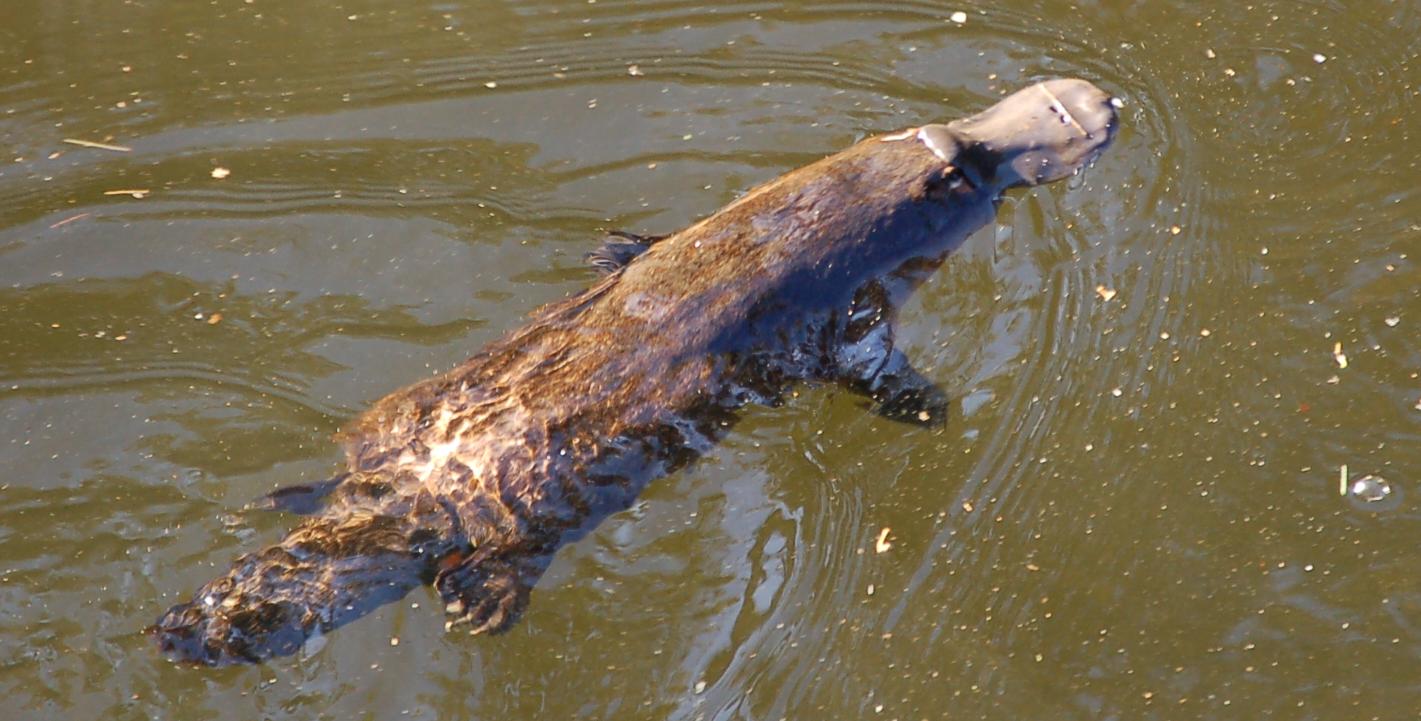...glad you brought this critter up...because as you might know...but something "one brow" and "akmvp" refuse to realize or accept is this bad boy is an evolutionist NIGHTMARE!
The duck-billed platypus has always been a thorn in the side of evolutionists. Many evolutionists would like to simply prune it off the evolutionary tree of life, having been forced to place it on a lone branch all to itself. But the thorn has just gotten much larger, and much harder to ignore.
Aside from the fact that this mammal lays eggs and possesses features found only among birds and reptiles, researchers have now discovered that the platypus boasts not two sex chromosomes like most animals, but ten!!!
So to give one brow and his partner in crime "AKMVP" some of there own medicine, I present you with the following: Before you write this off as simply a “non-issue” anomaly, consider for just a moment the implications. Normally, one sex chromosome from a male species combines with one sex chromosome from a female species to make a full compliment of chromosomes. With the duck-billed platypus, this combination suddenly takes on an entirely different level of complexity!
As Elizabeth Pennisi, Science staff writer, admitted:"Many organisms have two sex chromosomes. Women for example have two X chromosomes, and men have one X and one Y. But in the platypus, males have five X and five Y chromosomes, while females have 10 Xs. If the male platypus’s X and Y chromosomes randomly segregated into sperm this would greatly complicate sex determination."
Pennisi observed:"The chain consisted of alternating X and Y chromosomes. During the key step in sperm formation—a division that results in two cells, each with half the number of the original number of chromosomes—the X and Y chromosomes peeled off from the chain one by one and headed into separate cells, all segregating faithfully with their own kind. This ensures that half of the sperm each have five X chromosomes; the other half have five Y chromosomes (2004)."
Was it by accident that these chromosomes formed this chain in alternating order, and then precisely peeled off into separate X and Y groups? This extreme complexity veritably
screams “design”!
This latest study helps scientists understand how the duck-billed platypus is able to keep its reproduction from going amiss. In documenting this amazing feat, Grützner and his colleagues watched the ten chromosomes link up into a chain.
Yet researchers are hastily painting an evolutionary picture to try to explain this peculiarity.
Evolutionists, however, face a daunting task! First they must explain the sudden appearance of (and reason for)
double homologous sex chromosomes. How is it that at one point in time, “nature” was able to evolve a female member of a species that produces eggs and is internally equipped to nourish a growing embryo, while at the same time evolving a male member that produces motile sperm cells?
And, further, how is it that these gametes (eggs and sperm)
“conveniently” evolved so that they each contain half the normal chromosome number of standard somatic (body) cells? And why is this the case? Of the 46 human chromosomes, 44 are members of identical pairs, but two, the X and Y (generally referred to as the “sex chromosomes”), stand apart. Evolutionists thus are faced with the
unenviable challenge of explaining not only the origin of sex chromosomes themselves, but also the evolution of two totally different sex chromosomes (X and Y).
I'm going to stop here for now! But if you want to continue your feeble attempt to use the Duck-billed Platypus as proof of evolution....I can add a few more lengthy paragraphs that will further bury your ridiculous idea that no "designer" was involved in this marvelously "designed" creature!



